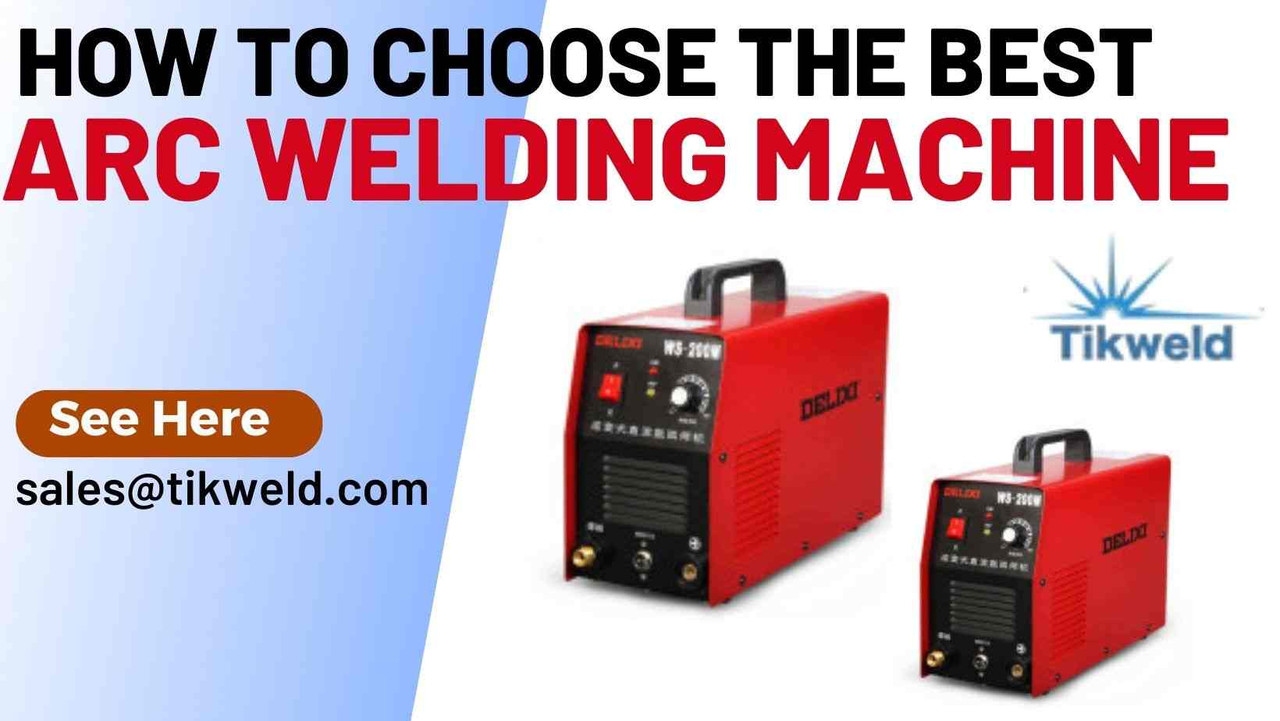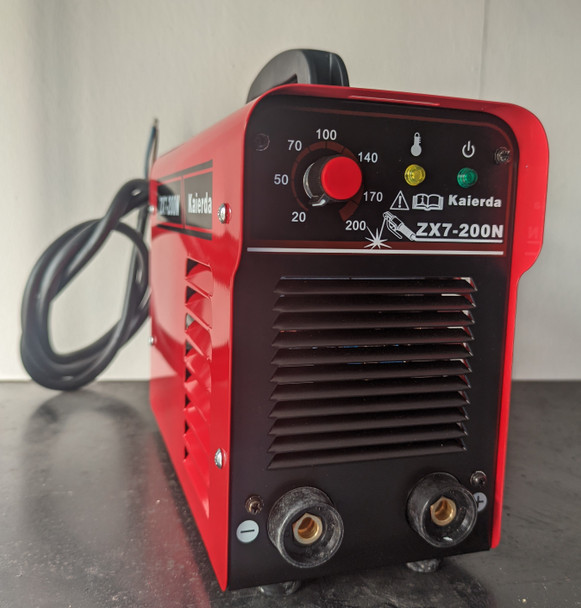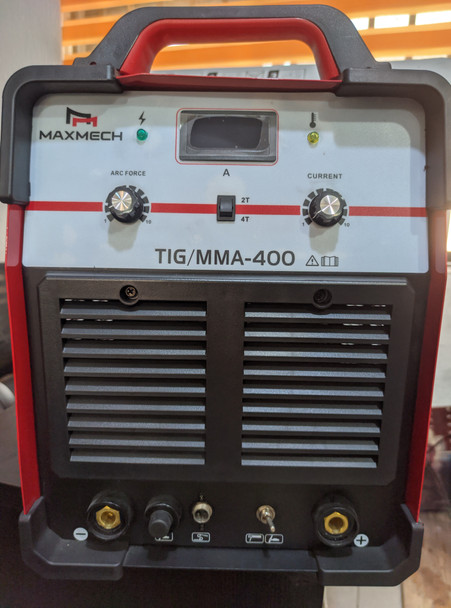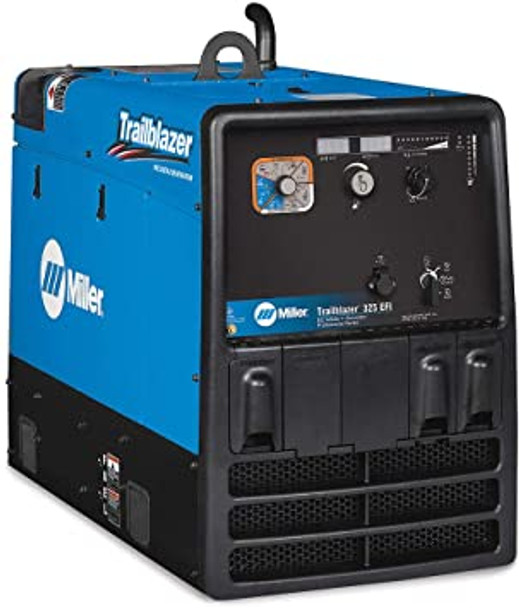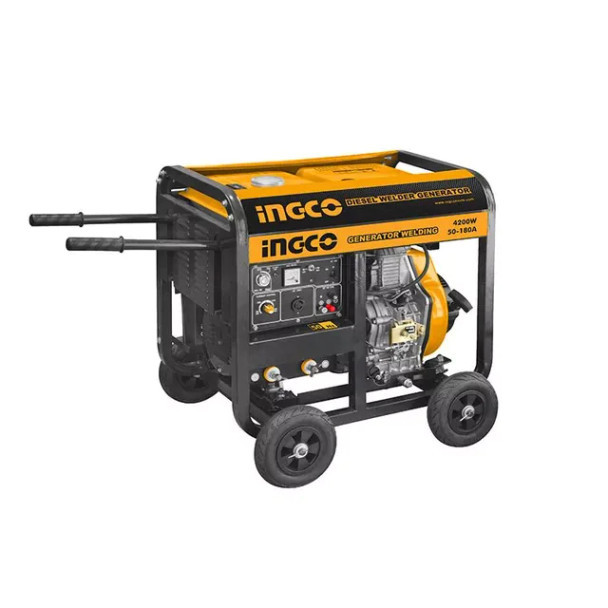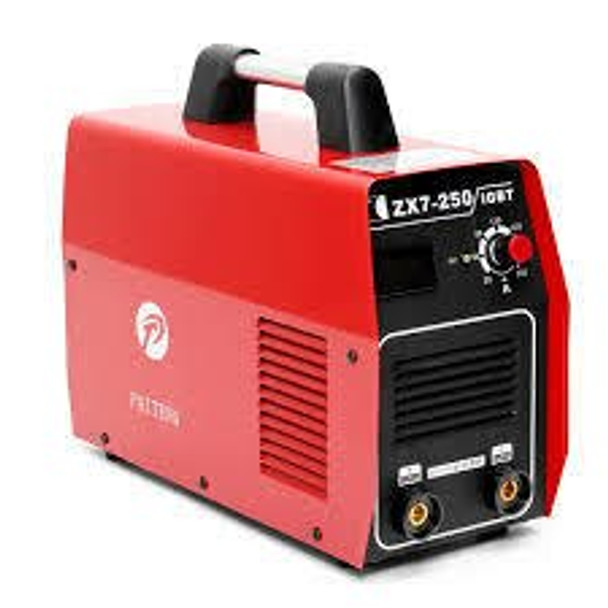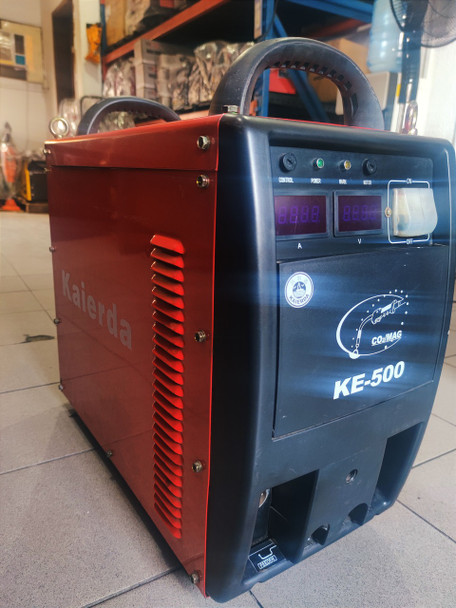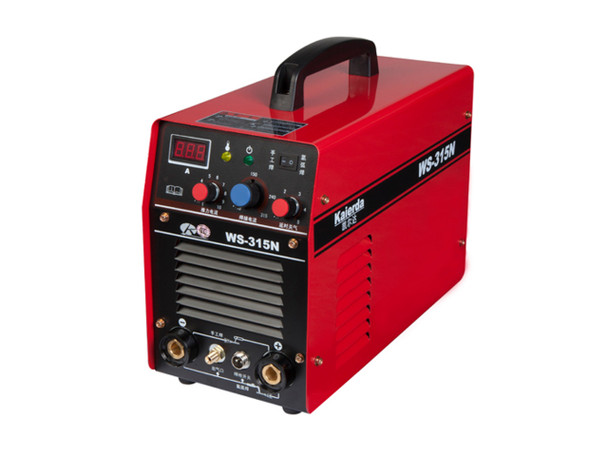How to Choose the Best Arc Welding Machine
Welding machines are the backbone of buildings, metal working industries providing strength, stability, and durability. There are several types of welding machine machines but the use of arc welding machines in welding industry is the most versatile because of their paramount importance in the construction of project works. The Selection of appropriate arc welding machine directly impacts the overall outcome of the project because it influences the safety, longevity, and cost-effectiveness of welding processes.
One of the fundamental aspects of choosing an arc welding machine is selecting the appropriate amperage range. Amperage determines the intensity of the welding arc and is crucial for producing quality welds. Consider the thickness of the materials you'll be welding. Thicker materials typically require higher amperage settings, while thinner materials need lower amperage. Choose a machine that offers an amperage range that aligns with your welding needs.
Arc welding machines stand as versatile workhorses in the world of metal fabrication and construction. Within the realm of arc welding, various processes like Shielded Metal Arc Welding (SMAW), Gas Metal Arc Welding (GMAW), and Gas Tungsten Arc Welding (GTAW) cater to different requirements. SMAW provides portability and works well outdoors, while GMAW is suited for high-speed production. GTAW, on the other hand, offers precision and control, making it ideal for intricate work. This array of processes ensures that arc welding machines can be tailored to match the demands of specific projects.
In this content we will write comprehensively on how to select the appropriate arc welding machine for a positively outstanding result. It is important to understand the characteristics of various arc welding machines in order to make informed decisions before purchasing an arc welding machine or carrying out any welding activity. This includes considering factors such as strength, welding ability/capacity, and cost-effectiveness. By choosing the right arc welding machine, welding professionals can ensure welding integrity, meet project specifications, and optimize performance.
Learn more on :How Does an Arc Welding Machine Work?
Kaierda Inverter/Arc Welding machine ZX7-200N/220V/DC
Understanding Arc Welding
A. Explanation of Arc Welding Process
Arc welding is a fundamental welding process that involves creating an electric arc between an electrode and the workpiece. The intense heat generated by the arc melts the base metal and, in some cases, the electrode as well. As the molten metal cools, it fuses together, creating a strong and permanent joint. The key components of the arc welding process include:
- Electrode: The electrode is a metal wire or rod that serves as a filler material in most arc welding processes. It can be consumable (melts into the weld) or non-consumable (remains unchanged). The choice of electrode material depends on the type of welding process and the metals being joined.
- Arc: The arc is the electrical discharge formed between the electrode and the workpiece. It generates intense heat, which melts the metals to be joined. The arc is shielded by inert gases or flux to prevent atmospheric contamination of the weld.
- Shielding: Shielding is crucial in arc welding to protect the molten weld pool and the arc from atmospheric gases like oxygen and nitrogen, which can cause defects in the weld. This is achieved using various methods such as flux coatings on electrodes, inert gases (as in GTAW), or active gases (as in GMAW).
B. Different Types of Arc Welding Processes
Arc welding encompasses several distinct processes, each tailored to specific applications and materials:
- Shielded Metal Arc Welding (SMAW): SMAW, commonly known as stick welding, employs a consumable electrode coated with flux. As the electrode melts, the flux produces shielding gases that protect the weld from impurities. SMAW is versatile, portable, and suitable for various materials, making it a preferred choice for maintenance and outdoor applications.
- Gas Metal Arc Welding (GMAW) - MIG Welding: GMAW, or Metal Inert Gas (MIG) welding, uses a continuous consumable wire electrode fed through a welding gun. An inert gas shield protects the weld from atmospheric contamination. GMAW is fast, efficient, and widely used for both thick and thin materials.
- Gas Tungsten Arc Welding (GTAW) - TIG Welding: GTAW, or Tungsten Inert Gas (TIG) welding, employs a non-consumable tungsten electrode. An inert gas shield protects the weld while a separate filler rod may be added. GTAW offers exceptional precision and control, making it ideal for critical applications and intricate designs.
C. Benefits and Versatility of Arc Welding
Arc welding processes offer numerous benefits that contribute to their widespread use in various industries:
- Versatility: Arc welding is versatile, capable of welding a wide range of materials, including steel, stainless steel, aluminum, cast iron, and more. It can handle various thicknesses, making it suitable for both heavy structural work and delicate components.
- Portability: Processes like SMAW are portable, requiring minimal equipment. This allows welders to work in remote locations or on-site where transportation of heavy machinery may not be feasible.
- Strength and Durability: Arc welding produces strong and durable welds, ensuring the integrity of structures, machinery, and fabricated components.
- Adaptable to Conditions: Arc welding can be performed in various environments, including outdoor settings. SMAW, for instance, is less affected by wind and weather conditions compared to some other welding processes.
- Process Options: Different arc welding processes provide options for speed, precision, and ease of use. GMAW offers high productivity, while GTAW excels in precision work.
- Repair and Maintenance: Arc welding processes are essential for repair and maintenance tasks, enabling the restoration of damaged or worn-out components.
- Cost-Effectiveness: Arc welding is generally cost-effective, with accessible equipment and a wide range of available electrodes and consumables
Maxmech Inverter Welding Machine TIG/MMA-400
Key Factors to Consider before choosing Arc welding machine
A. Power Source and Output
Determining the Appropriate Amperage Range:
Selecting the right amperage range is a crucial consideration in choosing an arc welding machine. Amperage determines the heat intensity of the arc, directly impacting the penetration and quality of the weld. For thinner materials, lower amperage is suitable to prevent burn-through, while thicker materials require higher amperage for proper fusion. The machine you choose should offer an amperage range that covers the spectrum of your welding tasks.
AC vs. DC Welding Machines:
Arc welding machines operate on either alternating current (AC) or direct current (DC). Understanding the differences between AC and DC welding is vital. DC welding provides consistent and stable arcs, making it suitable for most applications. AC welding, on the other hand, is often preferred for welding aluminum due to its ability to prevent oxide formation. Consider the materials you'll be welding and the advantages of each current type when making your choice.
B. Duty Cycle
Duty cycle represents the amount of time a welding machine can operate at a given amperage within a specific time frame before needing to cool down. For example, a machine with a 60% duty cycle at 200 amps can weld continuously for 6 minutes out of every 10 minutes. A higher duty cycle indicates better thermal management and longer welding periods without interruptions. When selecting a machine, match the duty cycle to the demands of your projects. Heavy-duty applications necessitate higher duty cycles to prevent overheating and downtime.
C. Welding Voltage and Control
Welding voltage plays a significant role in controlling the characteristics of the weld. Voltage settings affect the arc length, penetration depth, and overall weld quality. Having the ability to adjust voltage is essential for fine-tuning the welding process according to the materials and joint configurations. Look for a machine that provides voltage control, as well as presets for common welding scenarios, allowing you to achieve consistent results.
Miller Welding machine Trailblazer 325 diesel driven
D. Portability and Size
The portability and size of the welding machine can influence its usability in various environments. Consider the mobility requirements of your projects. If you'll be moving the machine between job sites or working in confined spaces, opt for a compact and lightweight design. Machines equipped with handles, wheels, or carrying options make transportation easier, enhancing your flexibility and efficiency.
E. User-Friendly Interface and Controls
A user-friendly interface contributes to efficient and effective welding operations. Clear controls, labeled settings, and intuitive displays make setup and adjustments easier, especially for those new to welding. Machines with ergonomic designs and well-organized control panels simplify the process of fine-tuning welding parameters. Digital displays provide real-time feedback, enhancing your ability to monitor and adjust settings for optimal results.
F. Advanced Features
Modern arc welding machines often offer advanced features that elevate your welding capabilities:
- Pulse Welding: Pulse welding modulates the welding current, allowing you to control heat input. This is especially beneficial for thin materials and preventing distortion.
- Adjustable Arc Force: Arc force adjustment maintains arc stability, even at low amperages or in challenging positions. This feature minimizes spatter and electrode sticking.
- Hot Start and Arc Force: Hot start provides an initial higher amperage to facilitate easy arc initiation, while adjustable arc force maintains the arc's stability during welding.
These advanced features provide you with enhanced control and versatility in achieving specific welding outcomes. However, their necessity depends on the complexity of your projects and your skill level.
Askaynak arc welding machine available for pick-up
A Guide to Assessing Your Welding Needs
A. Identifying the Type of Projects You'll Be Working On
Before selecting an arc welding machine, a fundamental step is understanding the nature of the projects you'll be undertaking. The scope of your welding tasks will greatly influence the type of machine you should choose. Whether you're engaged in heavy structural fabrication, automotive repairs, artistic creations, or intricate precision work, each project category requires specific welding processes, equipment features, and capabilities.
Ingco Diesel Welder Generator GDW65001
B. Considering the Materials You'll Be Welding (Steel, Aluminum, etc.)
The materials you intend to weld play a pivotal role in the selection of your arc welding machine. Different metals possess varying melting points, thermal conductivity, and other unique characteristics that impact the welding process. For instance:
- Steel: A common material in fabrication and construction, steel welding requires machines with versatility to handle various steel grades and thicknesses.
- Aluminum: Welding aluminum demands precise control over heat input due to its high thermal conductivity. Machines with adjustable amperage and pulse welding capabilities are beneficial.
- Stainless Steel: Stainless steel welding requires clean, well-protected welds to prevent oxidation. Processes like TIG welding (GTAW) with inert gas shielding are often preferred.
C. Evaluating the Thickness of the Materials
The thickness of the materials influences the amperage and voltage settings needed for optimal weld penetration and strength. Thicker materials generally require higher amperage, while thinner materials demand lower amperage settings. Choose an arc welding machine with an amperage range suitable for the thicknesses you'll be working with. A machine with adjustable settings allows you to adapt to various material gauges.
D. Determining the Welding Environment (Indoor, Outdoor, Confined Spaces)
The environment in which you'll be welding has significant implications for machine selection:
- Indoor: If your projects primarily take place indoors, you have more control over factors like wind and weather. You can consider a broader range of welding machines, focusing on factors like power source availability and machine features.
- Outdoor: Outdoor welding introduces challenges such as wind, rain, and dust that can affect the welding arc. For outdoor work, consider machines with good arc stability and features like adjustable arc force to combat external disturbances.
- Confined Spaces: If you'll be working in tight spaces, a compact and portable welding machine is essential. Machines with ergonomic designs and handles for easy transport are particularly valuable.
Kaierda welder ZX7-400 Welding machine
E. Specialized Requirements
Additionally, assess if your projects have any specialized requirements, such as:
- Precision Welding: If precision is crucial, as in intricate artwork or aerospace components, processes like TIG welding (GTAW) offer finer control and detail.
- High Production: For industrial settings with high production demands, processes like MIG welding (GMAW) offer speed and efficiency.
- Maintenance and Repair: Repair work often requires portability and adaptability to different materials and conditions. Versatile processes like stick welding (SMAW) are commonly used.
Understanding your welding needs in terms of project scope, material types, thicknesses, environment, and any specialized requirements provides a solid foundation for selecting the most suitable arc welding machine. This informed approach ensures that your chosen machine aligns seamlessly with the demands of your projects, enabling you to achieve superior welding results with efficiency and precision.
F. Budget Considerations
While assessing your welding needs, it's essential to factor in your budget constraints. Arc welding machines vary in terms of features, capabilities, and price points. It's crucial to strike a balance between your welding requirements and the resources available. Opting for a machine that meets your immediate needs while offering room for growth and versatility can be a prudent investment in the long run.
H. Seeking Expert Advice
If you're new to welding or facing complex projects, don't hesitate to seek advice from experienced welders or professionals in the field. Their insights can provide valuable perspectives and help you make an informed decision. Additionally, many welding equipment suppliers and manufacturers offer consultation services to guide you in choosing the most suitable machine based on your needs.
Types of Arc Welding Machines
A. Shielded Metal Arc Welding (SMAW) Machines
Shielded Metal Arc Welding (SMAW), commonly known as stick welding, is one of the oldest and most versatile arc welding processes. In SMAW, a consumable electrode with a flux coating is used. As the electrode melts, the flux produces gases that shield the weld from atmospheric contaminants. This makes SMAW suitable for various environments, including outdoor and remote locations. SMAW creates strong, reliable welds, making it popular in construction, maintenance, and repair work.
Features to Look for in an SMAW Machine: When selecting an SMAW machine, consider these features:
- Amperage Range: Ensure the machine covers the amperage range required for your projects, from thinner materials to thicker structural components.
- Duty Cycle: Opt for a machine with a duty cycle suitable for your workload. Higher-duty cycles are advantageous for continuous welding.
- Portability: Especially important for outdoor and remote work, choose a machine that is lightweight and easy to transport.
- Electrode Compatibility: Different electrodes are designed for various materials and applications. Ensure the machine supports the electrodes you intend to use.Voltage Control: Adjustable voltage settings provide control over weld penetration and quality.
- Arc Stability: Look for a machine that offers stable arc performance, even in challenging conditions.
Kaierda Gas-Shielded Welding Machine CO2/MAG KE-500
B. Gas Metal Arc Welding (GMAW) Machines
Gas Metal Arc Welding (GMAW), also known as Metal Inert Gas (MIG) welding, utilizes a continuous consumable wire electrode fed through a welding gun. An inert gas shield, often argon or a mixture, protects the weld from atmospheric contamination. GMAW is known for its high welding speed and efficiency. It's widely used in industries requiring high productivity, such as automotive, manufacturing, and fabrication.
Features to Consider in a GMAW Machine: When choosing a GMAW machine, these features are essential:
- Wire Feeder: The wire feeder mechanism should be reliable and consistent to ensure smooth wire feeding during welding.
- Gas Control: Look for a machine with precise gas flow control to maintain an effective shielding environment.
- Voltage and Amperage Controls: Adjustable settings for voltage and amperage allow you to tailor the welding process to different materials and thicknesses.
- Synergic Control: Some advanced machines offer synergic control, automatically adjusting settings based on wire speed and material thickness.
C. Gas Tungsten Arc Welding (GTAW) Machines
Gas Tungsten Arc Welding (GTAW), also known as Tungsten Inert Gas (TIG) welding, employs a non-consumable tungsten electrode to create an electric arc. An inert gas shield, typically argon, prevents contamination of the weld. GTAW is renowned for its precision and ability to produce high-quality, aesthetically pleasing welds. It's commonly used in aerospace, electronics, and artistic applications.
Features to Seek in a GTAW Machine: When considering a GTAW machine, focus on these features:
- Torch Design: A high-quality TIG torch provides comfortable handling and control during intricate welds.
- Foot Pedal Control: Foot pedal control allows hands-free adjustment of amperage, giving welders precise control over the heat input.
- AC/DC Capability: Some machines offer both AC and DC modes, making them versatile for welding various materials, including aluminum and steel.
- Pulse Welding: Pulse welding mode is beneficial for controlled heat input and reduced distortion in thin materials.
Safety Considerations and Maintenance of Arc Welding Machines
Safety and maintenance are inseparable aspects of welding equipment operation. Proper safety practices not only protect the welder but also contribute to the longevity and reliability of arc welding machines. By understanding the safety considerations and following a disciplined maintenance routine, you can ensure efficient and safe welding operations while prolonging the life of your equipment.
A. Safety Considerations:
- Personal Protective Equipment (PPE): Always wear appropriate PPE, including a welding helmet with the right shade, safety glasses, flame-resistant clothing, welding gloves, and hearing protection. These precautions shield you from sparks, UV radiation, and potential burns.
- Ventilation and Fume Extraction: Proper ventilation and fume extraction are essential to remove welding fumes, gases, and smoke from the work area. Adequate airflow prevents inhalation of hazardous particles, ensuring the health of the welder and those nearby.
- Electrical Safety: Ensure the welding machine is properly grounded to prevent electrical shocks. Avoid using damaged cables and extension cords. Inspect plugs, outlets, and cables for any signs of wear or damage before use.
- Fire Prevention: Keep a fire extinguisher nearby, as welding sparks and hot materials can ignite flammable materials. Clear your workspace of clutter and combustibles before starting welding operations.
- Proper Storage: When not in use, store welding electrodes and consumables in a dry place to prevent moisture absorption, which can lead to poor weld quality.
- Emergency Procedures: Familiarize yourself with emergency procedures, including shutting off the power supply and using the emergency stop function on the welding machine.
B. Maintenance of Arc Welding Machines:
- Regular Cleaning: Dust, debris, and welding spatter can accumulate on the machine's components, affecting performance. Regularly clean the machine using compressed air, brushes, or specialized cleaning tools.
- Electrode and Consumable Inspection: Check electrodes and consumables for wear, damage, or contamination before use. Replace them if necessary to ensure consistent weld quality.
- Cooling System Maintenance: If your welding machine has a cooling system, such as a fan or water cooling, ensure it's functioning properly. Clean or replace air filters and inspect water levels in cooling systems as recommended by the manufacturer.
- Inspect Cables and Connections: Regularly inspect cables, connectors, and plugs for signs of wear, fraying, or damage. Faulty connections can lead to poor electrical contact and unsafe operation.
- Calibration and Settings: Periodically calibrate the machine to ensure accurate voltage and amperage readings. Check and adjust settings according to the requirements of your welding projects.
- Professional Inspection: Consider scheduling routine inspections by a qualified technician to ensure that the machine is in optimal working condition. Professional inspections can catch potential issues early and prevent costly breakdowns.
- Storage: When not in use, store the welding machine in a clean, dry, and dust-free environment. Protect it from extreme temperatures and humidity.
- User Manual: Follow the manufacturer's recommendations for maintenance intervals and procedures outlined in the user manual.
Buy Kaierda Electric Welding machine
Frequently Asked Questions
Q1: Which type of electrode is used in arc welding?
Ans: Stick electrodes are the most common type of electrode used in arc welding
Q2: How Does An Arc Welding Machine Work?
Arc welding machines create an electric arc by passing electrical current through an electrode, which generates intense heat. This heat melts the electrode and the workpiece, allowing them to fuse together.
Q3: What Types Of Metals Can Be Welded Using Arc Welding Machines?
Arc welding machines can be used to weld a wide range of metals, including steel, stainless steel, aluminium, copper, and various alloys.
Related Article;
Essential Welding Equipment for Beginners: A Comprehensive Guide
An Overview of Different Types of Arc Welding Machines
Conclusion.
In the world of welding, where precision and strength intersect, the choice of an arc welding machine is a decision that holds transformative potential for your projects. As we conclude this guide on how to choose the best arc welding machine, it becomes clear that this decision goes beyond merely selecting a tool – it's about equipping yourself with the means to turn visions into reality, to merge metals into masterpieces, and to forge bonds that stand the test of time.
From understanding the fundamentals of arc welding processes to evaluating your unique welding needs, considering power sources, duty cycles, and advanced features, this guide has illuminated the path toward informed decision-making. It's evident that the world of arc welding offers an array of processes – from the steadfast Shielded Metal Arc Welding (SMAW) to the swift Gas Metal Arc Welding (GMAW) and the intricate Gas Tungsten Arc Welding (GTAW) – each offering a canvas for creativity, engineering, and craftsmanship.
Safety considerations and diligent maintenance underscore the foundation of successful welding endeavors. Ensuring compliance with safety standards and cultivating a disciplined maintenance routine not only safeguard lives but also extend the life and effectiveness of your welding machine. As sparks fly and metals meld, your commitment to safety and maintenance echoes a commitment to excellence.
In the end, choosing the best arc welding machine is not just about selecting a piece of equipment; it's about empowering yourself with the means to shape the world around you. With careful consideration, technical insight, and an eye on innovation, you embark on a journey where raw materials metamorphose into structures, creations, and connections that bridge gaps and illuminate possibilities.
Armed with this guide's wisdom, you're equipped to approach your welding projects with confidence, vision, and the assurance that your chosen arc welding machine is not merely a tool but a conduit for creativity, a vehicle for skill growth, and a testament to your commitment to craftsmanship. The sparks you ignite today have the potential to illuminate a path toward a future of exceptional welding achievements.

